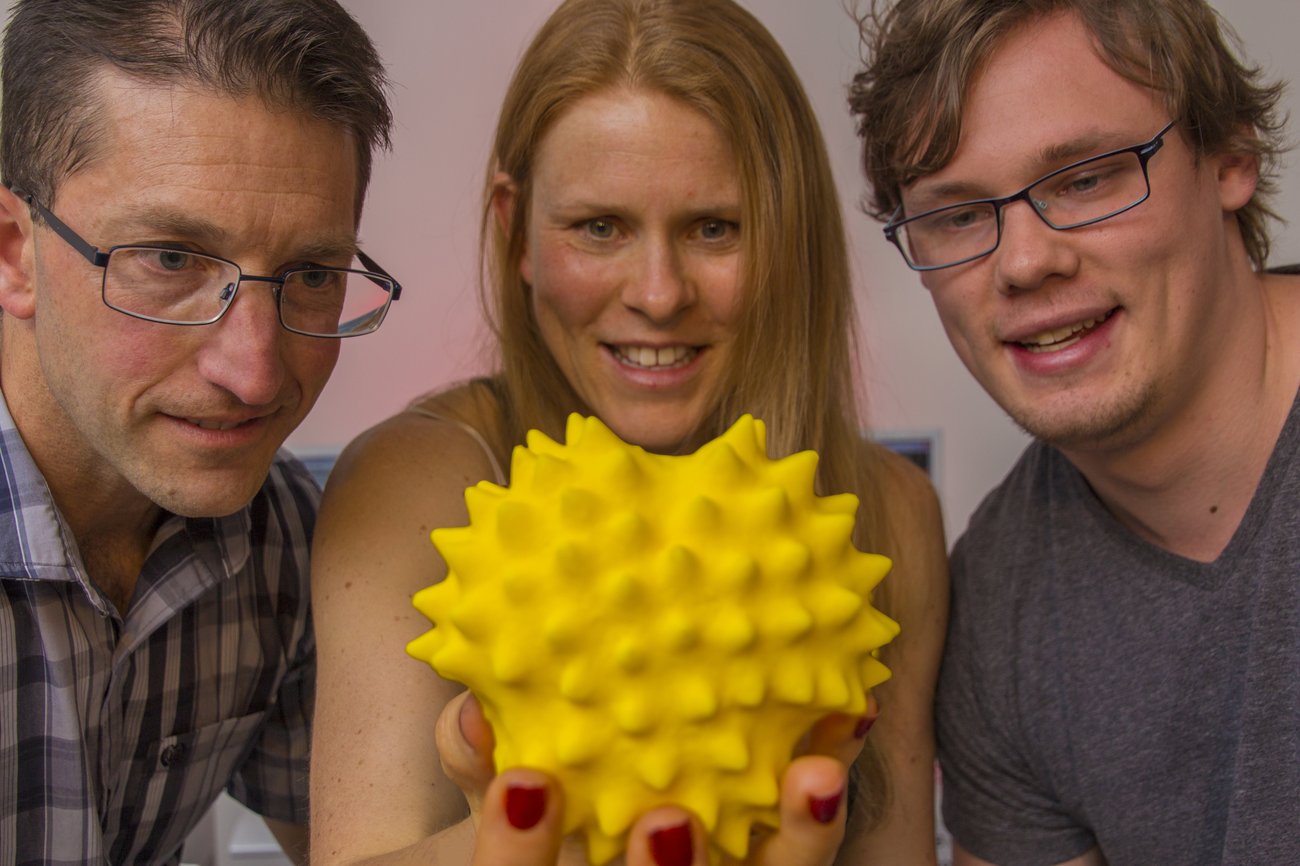
“Most people don’t give pollen a second thought beyond washing it off their car in spring,” says Dr Katherine Holt, who gives pollen much more thought than that.
As senior lecturer in geography at Massey University in Palmerston North, the 35-year-old is finding ways to make pollen more interesting for her students, and her research. Looking into the different applications of pollen, from reconstructing past vegetation with fossilised pollen to using it for honey quality control, she has a multi-purposed approach to the field of palynology.

The Napier-born researcher says she knew she was going to be a scientist from the age of five, other than a short-lived distraction or two of becoming an accountant or fashion designer. But a passion for pollen research stuck to her by chance. Her undergraduate study at Massey focussed on geology and earth science. It was when completing her PhD on one of five trips to the Chatham Islands that she realised the power pollen could unleash.
“I got into the pollen to reconstruct the climate and vegetation history [of the island] and I learnt a lot about how every plant produces a different type of pollen – a different shape, different size – which gives it this power for tracking back to the plant that it came from. I think that kind of power was what really intrigued me.”
She still sounds mesmerised by pollen’s potential as she describes it under a microscope, “just so diverse and so amazing to look at”.

But pollen under a microscope can be hard to trace for her undergraduate and postgraduate students, so she sought a new way to recognize each grain. The resulting 3D-printed pollen models were her solution to the specimens’ multifaceted nature and her ticket to a nomination at the New Zealand Innovation Awards, as one of three finalists from Manawatu.
“When you are trying to look at something down a microscope, it’s tiny and basically in two dimensions, so being able to appreciate how the polygrams look at different angles, having something you can actually hold and move around in your hand can really help,” she says. “I really liked the idea of actually measuring the morphological features directly off the pollen and printing it out, as opposed to looking at a picture of pollen and trying to represent that in plasticine.”

The polygrams of your typical pollens are around 10-100 microns in size, “at most the width of a human hair”. But the teaching aids range from “ping pong ball size to … fills up your fist”, which is 2,000–5,000 times the real size.
Dr Holt has produced around 20 scale models with Massey’s Manawat? Microscopy and Imaging Centre. Having already worked on automatic pollen recognition projects, she’d used a microscope to photograph cross-sections of the pollen for a composite image – but to print pollen in 3D she needed to do this with the Centre’s highresolution confocal microscope.
Surprised that she could still enter the Innovation Awards as a young innovator, Dr Holt says it’s really about “making it easier for students to appreciate the pollen side of things and be more inclined to take it on as a career”.
Recognising the shortage of students going in to science research in general, she hopes to inspire some students to stay in the pollen field. “We need more people coming through and developing new methods in science, addressing all the questions we have around environment change, managing the environment,” she says. “Here in New Zealand, we’ve got issues about the effects agriculture and other industries have on our environment. Our economy is based on that, so we need more students coming through and starting research careers to try and solve the problems in newer, innovative ways.”
Dr Holt wishes to continue her study and teaching in the area and she will also be learning a new discipline, motherhood – as she and her engineer husband are expecting a baby at the end of the year. And she has big dreams for her pollen babies, too: “I’d love to produce sets for every plant there is. So ideally you’d end up with thousands and thousands of them.”




